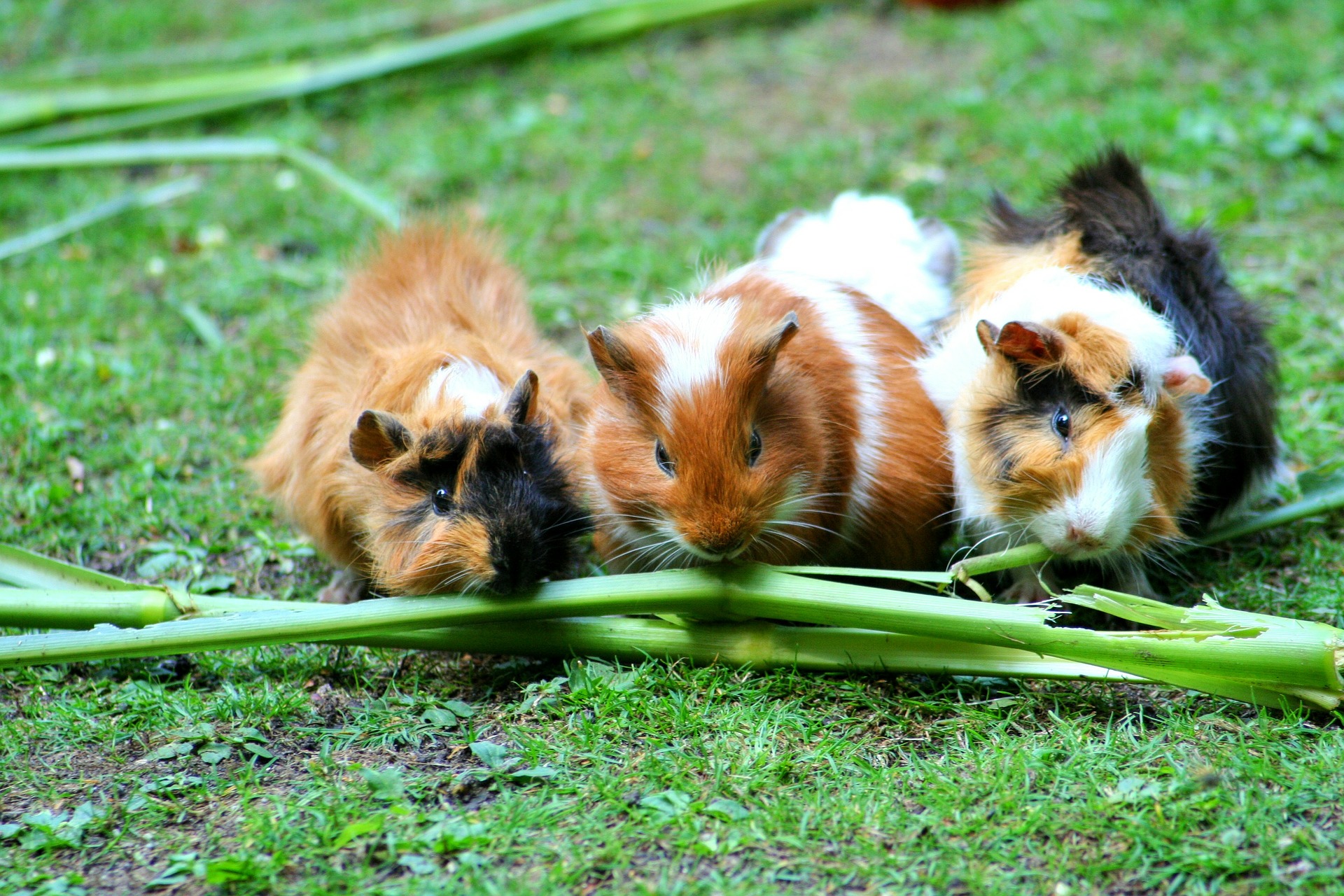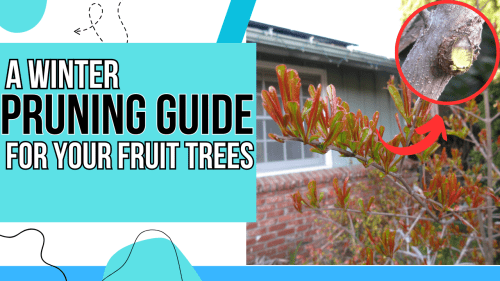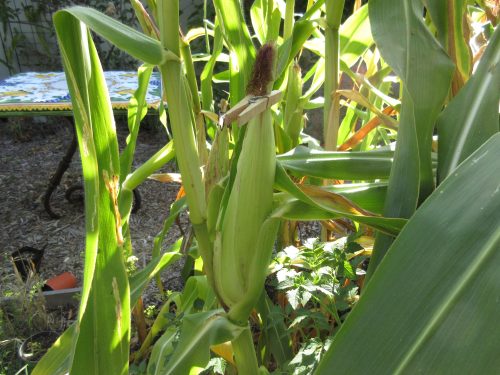Eric K. writes Ask Gardenerd this week about using guinea pig poop in the garden: “Can I use guinea pig poop as fertilizer for tomatoes? And since we have a never-ending supply, can I keep dumping it into the soil all summer long, or is there a point at which it’s just too much? Also, when we sweep up the poop, it comes with spilled pieces of their feed hay (Timothy). Can I also dump the hay into the garden soil? I read somewhere that the hay may contain seeds, so perhaps I shouldn’t? Thanks.”

Great question, Eric. Guinea pig poop is similar to rabbit poop in that it doesn’t burn your plants. The carbon-to-nitrogen ratio (C:N) is around 12:1 so it’s mild. If you add urine-soaked bedding, the ratio is higher.
The difference is that guinea pigs can possibly carry giardia, which humans can contract. In my research, I found articles stating that sometimes the human discovers the infection in themselves before they detect it in their guinea pig.
What to Do?
To be on the safe side, it’s best to compost your guinea pig poop and bedding for a few months at least before applying it to food crops. You can probably apply the manure and bedding straight (uncomposted) around non-edibles and fruit trees. The risk is lower there.
If you have pets that eat other animal droppings, definitely compost your guinea pig manure and bedding. It will break down quickly and your garden will enjoy the benefits of that Timothy hay even more.
Hay has Seeds
We always need a refresher on hay vs. straw because it’s easy to forget the difference, so here goes: hay is the whole plant, including the seeds. Straw is just the biomass after the seed heads have been removed. So, yes, that Timothy hay has seeds that will most likely sprout in the garden. If you don’t mind weeding a little, go for it. Otherwise compost it first.
How Much Is Too Much?
Both the manure and the Timothy hay are nitrogen ingredients, so keep an eye on your garden. If you see a lot of green, leafy growth but not much fruiting and flowering, cut back on the manures. Add phosphorus and potassium ingredients to your compost and garden such as high-phosphorus sea bird guano and kelp meal respectively. It’s always good to do a soil test (for N, P, and K) to check levels once per year before amending.
We hope this helps you use that fantastic resource in your garden more effectively. Thanks for writing in.
Hey gardenerds, if you have experience with guinea pig poop in your garden post a comment below.





This is an awesome idea! We have two pigs and boy do they poo! We use a c&c open habit with piggy daddy pads. I keep their hay in a container for easily cleaning.
Guinea pigs, like rats and other rodents, can carry leptospirosis, which is transmitted through their droppings and urine. Leptospirosis can remain viable in soil for quite a while. I’m not sure why this is not mentioned, as leptospirosis is a serious disease that can be lethal.
Thanks for adding this info, Lee. We didn’t run across leptospirosis in the research, but glad to have it mentioned here.
I just dump the used litter in the flower bed each time the habitat is cleaned. When I want some mulch, I go out and scoop what I need from that area. The mulch seems to get pushed away from the common “drop point” so it’s easy to grab what is aged as opposed to what is fresh, for example. My family has done this for decades and have always had good results with zero evident negative aspects. We do use a pine or cedar chip litter as opposed to paper shreds in vibrant colors that would look weird.
Thanks for sharing your strategy, Emberly.
Never use cedar bedding for guinea pigs! Its aromatic oils are toxic and can cause URIs. Kiln dried pine or kiln dried aspen for guineas only.
Pingback: Rabbit Fertilizer for Houseplants: Here's What You Need to Know
Pingback: How To Use Rabbit Droppings In The Garden
What about the combination of hay and poop in the worm bin? I read recently that worms will eat one or the other, but not both. This seems unlikely but have you ever heard of such a problem? Do I really need two separate worm bins? Poop in one and old hay/veg in the other?
You’re right Aja, I haven’t heard of this problem. Worms mostly wait for stuff to become covered with bacteria, then they consume the bacteria. So maybe one is more bacterially resistant than the other. I think you should compost your bedding and poop in a compost bin and leave the worm bin for food scraps. My 2 cents.
Hi, I have a couple Of guinea pigs and I want to try composting their leavings, which took me to search for composting solutions. The best way I found for me was using red worms with something like “hot frog living composter” .
Can I use this to compost their droppings? (While probably throwing some human food leftovers as well).
Also, as the guinea pig bedding I use wood chips (from the pet store), and I have no intention of separating it from the droppings, will it be ok to just toss all to the red worms bin? I estimate it’s about 10-20 % droppings and the rest is wood…
Thanks!
Good question, Roy. Guinea pig droppings are fine to compost, as is their bedding. Store bought bedding can be made of cedar or pine, both of which are anti-microbial. This means they may take longer to break down in the compost, but they are usually helpful in preventing bedding-related diseases in the guinea pig cage. Just be aware of that and wet them thoroughly before adding them to the compost. As far as where to compost them, I have a feeling you’ll run out of room in the Hot Frog Living Composter quickly. The bedding will take longer to break down than the droppings, so you may need another place to put them once that device fills up. I’m a big fan of compost bins on soil – no worms necessary, if you have room for them. Your bedding will break down easily and you can add your kitchen scraps there too. If not, start with the worm bin and see how quickly it fills up.